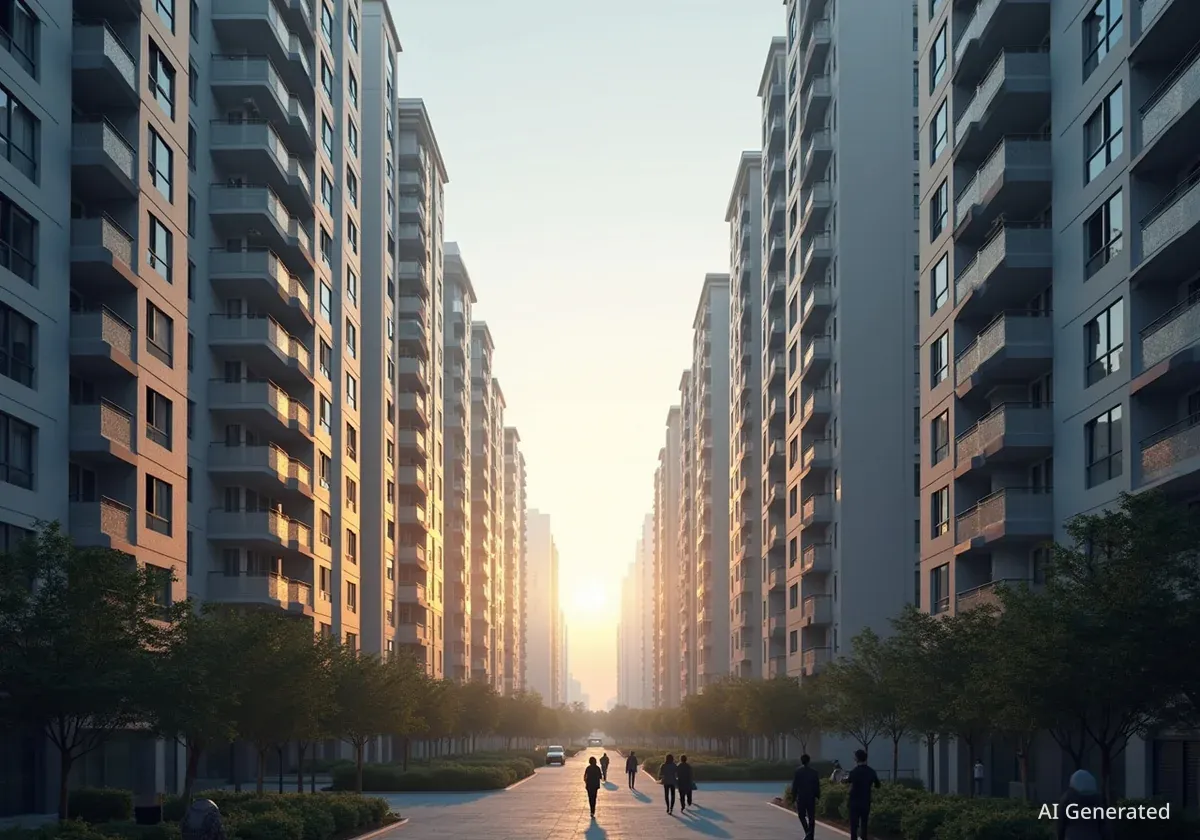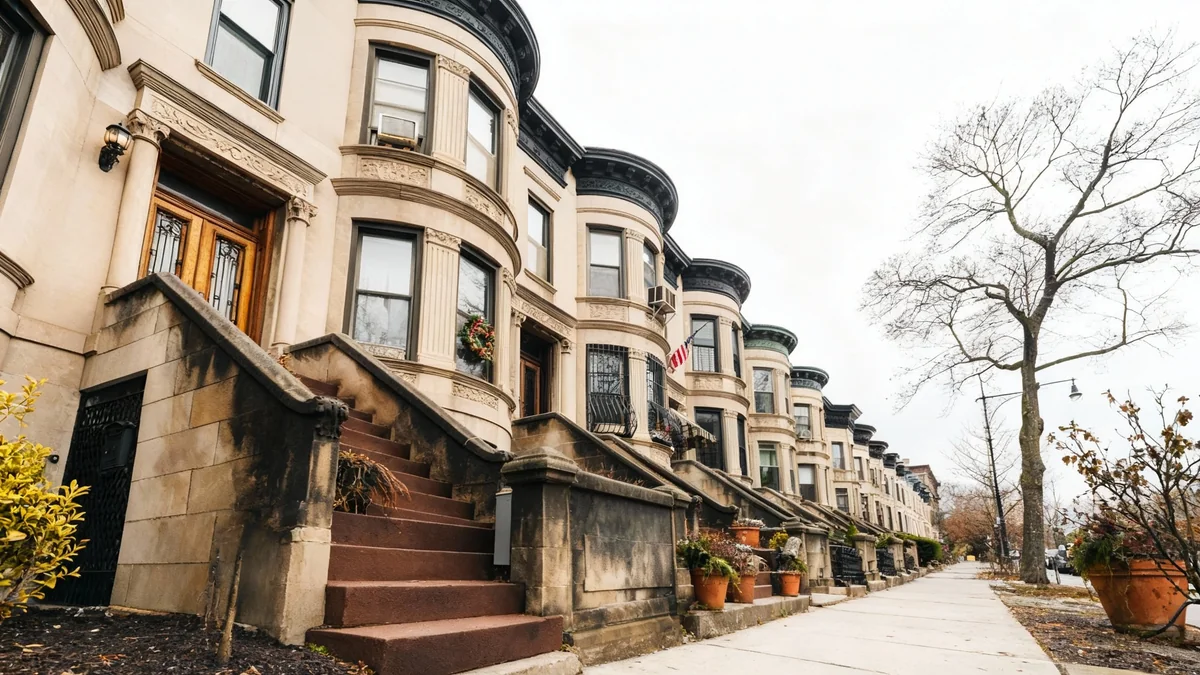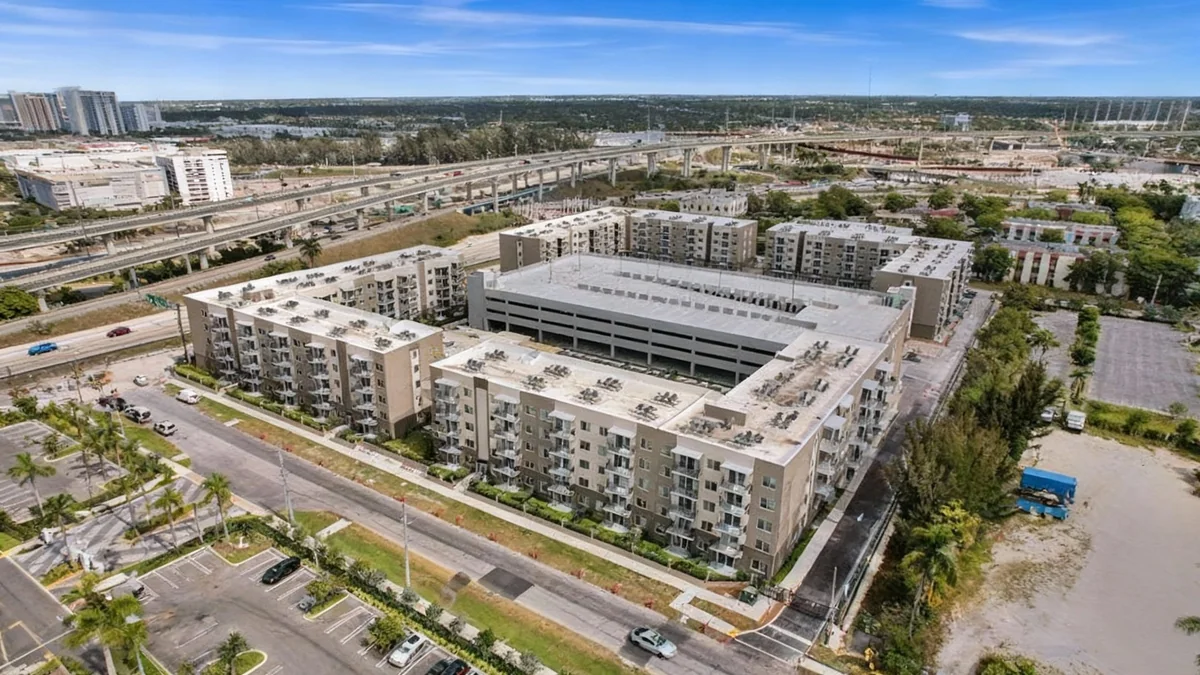A recent report from UBS, a global financial services company, has identified Miami as the world's most at-risk housing market. This assessment, released in October 2025, suggests that Miami's housing prices are significantly overvalued compared to local incomes and rental costs. However, local real estate experts offer a different perspective, arguing that the report may not fully capture the unique dynamics of the Miami market.
Key Takeaways
- UBS Global Real Estate Bubble Index names Miami as the world's most at-risk housing market.
- The report uses metrics like price-to-income and price-to-rent ratios to assess bubble risk.
- Local experts argue the report overlooks hidden income, international wealth, and a high percentage of cash buyers.
- Miami's market is described as cooling and maturing, rather than on the verge of a crash.
- Low distressed property rates and limited inventory continue to support prices.
UBS Report Details Miami's Risk Factors
The UBS Global Real Estate Bubble Index is an annual study that evaluates housing markets in 21 major cities worldwide. The index aims to identify cities where housing prices are disproportionately high relative to local economic fundamentals. A score above 1.5 indicates a high risk of a housing bubble.
In its latest report, Miami received a score of 1.73, placing it at the top of the risk list. Tokyo and Zurich followed with high scores as well. The report highlights several key metrics contributing to Miami's high-risk classification.
UBS Bubble Index Metrics
- Price-to-Income Ratio: Compares home prices to average local incomes.
- Price-to-Rent Ratio: Compares home purchase costs to rental costs.
- Mortgage-to-GDP Ratio Change: Tracks changes in mortgage borrowing relative to economic output.
- Construction-to-GDP Ratio Change: Monitors new construction levels compared to economic output.
- City-to-County Price Ratio: Measures price differences between the city and its surrounding areas.
According to UBS, Miami's home prices have increased faster than inflation over the past 15 years, surpassing all other cities in their study. The report also notes that the price-to-rent ratio in Miami is currently higher than it was during the 2006 property bubble, which UBS considers a significant warning sign.
Local Experts Challenge UBS Findings
While the UBS report provides a data-driven analysis, many professionals deeply involved in Miami's real estate market believe it presents an incomplete picture. These experts point to unique characteristics of Miami that may not be fully captured by standard economic models.
"In Miami, we know that a lot of the income that is earned here, probably more than other cities, is not necessarily reported. So a lot of people are really making more money than it is reported."
Eli Beracha, Director of the Tibor and Sheila Hollo School of Real Estate at Florida International University
Hidden Income and International Wealth
Eli Beracha, a director at Florida International University's real estate school, argues that the UBS report's focus on local income data is insufficient for Miami. He explains that many property owners in Miami generate wealth outside the city or even outside the United States. This external income is often not reflected in local income statistics, leading to an understatement of actual buying power.
Miami's Global Appeal
Miami is a significant hub for international investment, attracting capital from various parts of the world. This global appeal means that a substantial portion of real estate purchases are made by individuals bringing existing wealth into the city, rather than relying solely on local earnings.
Beracha states that when international buyers, for example from Brazil, purchase homes in Miami, their financial capacity is not tied to Miami's average income. This influx of foreign capital is a major market driver that the price-to-income ratio may not adequately consider.
Ana Bozovic, a Miami-based real estate agent and founder of Analytics Miami, echoed these sentiments. She suggested the UBS report uses Miami as "clickbait" and spreads "sensationalist misinformation." Bozovic agrees with Beracha that the report's emphasis on price growth rate is a "reductive lens" that misses critical market nuances.
Factors Overlooked by the Report
Beyond income and international wealth, several other factors are crucial for a comprehensive understanding of Miami's housing market. These elements contribute to the market's resilience and stability.
The Impact of All-Cash Buyers
Both Beracha and Bozovic highlight the prevalence of all-cash buyers in Miami. This is a significant factor distinguishing Miami from many other U.S. markets. A recent report from Realtor.com indicated that Miami led the nation in all-cash transactions during the first half of 2025, with 43% of deals being cash purchases. For homes priced over $1 million, this figure rose to more than 53%.
Cash buyers are less affected by fluctuations in interest rates, reducing the risk of loan defaults and forced sales. This strong presence of cash transactions provides a buffer against market downturns, as these buyers are less likely to sell at a loss due to financial distress. Beracha explains that housing market crashes typically occur due to "overleveraging," where borrowers take on too much debt and cannot meet their payment obligations. The high volume of cash buyers mitigates this risk in Miami.
Limited Inventory and Low Distressed Properties
Another important point raised by Bozovic is the low rate of distressed properties, such as foreclosures, in Miami. The number of homes available for sale remains below pre-pandemic levels. When supply is limited and demand persists, prices tend to remain firm, even if the pace of appreciation slows down.
Inflow from High-Tax States
Miami continues to attract a steady stream of residents from states with higher tax burdens. These individuals often possess substantial wealth and seek a more favorable tax environment. Their relocation to Miami brings additional purchasing power and sustained demand to the real estate market.
A Maturing Market, Not a Bubble Bursting
Jake Krimmel, a senior economist at Realtor.com, offers an alternative interpretation of Miami's market trajectory. He acknowledges that the intense "boom" seen during the COVID-19 pandemic has moderated significantly. However, he does not foresee an impending "bubble ready to burst." Instead, Krimmel describes the current situation as "the air slowly coming out of the balloon."
This analogy suggests a gradual and controlled cooling, rather than a sudden collapse. Several indicators support this view:
- Slower Sales Pace: Miami is currently the slowest major U.S. housing market. Homes took an average of 89 days to sell in September, which is 16 days longer than the previous year.
- Increased Inventory: The number of homes on the market increased by 16.3% in September compared to a year ago.
- Patient Sellers: There has been a rise in listings being withdrawn from the market. This indicates that sellers are not under pressure to accept lower prices. They are willing to wait for the right buyer and a desirable offer, signaling a low level of "seller distress," according to Krimmel.
Beracha agrees, stating that this market adjustment is a normal phase after a period of exceptionally low interest rates and rapid price increases. He views it as a necessary "breather" for the market to stabilize.
UBS Report's Internal Contradictions
Bozovic also points out what she describes as "internal contradictions" within the UBS report itself. The report defines "bubble risk" as "the prevalence of a risk of a large price correction." Yet, later in the same document, the authors acknowledge that while price growth might turn negative in the coming quarters, "a sharp correction appears unlikely at this stage." This suggests a discrepancy between the high-risk label and the actual forecast.
Furthermore, the UBS report itself highlights Miami's ongoing appeal: "Miami's coastal appeal and favorable tax environment continue to attract newcomers… with real estate prices still well below those in New York and Los Angeles. International demand—particularly from Latin America—remains robust." These statements underscore the strong underlying demand and inherent value that support Miami's property prices, seemingly at odds with a top-tier bubble risk classification.
Conclusion: A Resilient and Maturing Market
From a broader perspective, the UBS report accurately reflects that Miami's housing market has experienced rapid growth and is now entering a more sustainable phase. However, the standard metrics, like price-to-income and price-to-rent ratios, must be interpreted with an understanding of Miami's unique economic and demographic characteristics.
Miami is distinct. It serves as a global magnet for wealth, a destination for those seeking tax advantages, and a market where cash transactions are common. The strength of its cash buyer segment, the continuous inflow of affluent individuals, and a persistent scarcity of desirable properties all contribute to a robust market foundation.
The current cooling trend is more akin to a natural market correction—a necessary period of adjustment after intense growth—rather than a precursor to a widespread collapse. While prices may not see exponential increases, a significant decline is also unlikely. The market is maturing, which generally signals long-term stability. The true narrative in Miami is not one of an impending bubble burst, but of a dynamic city with sustained demand and capital inflow, maintaining a resilient housing market.





